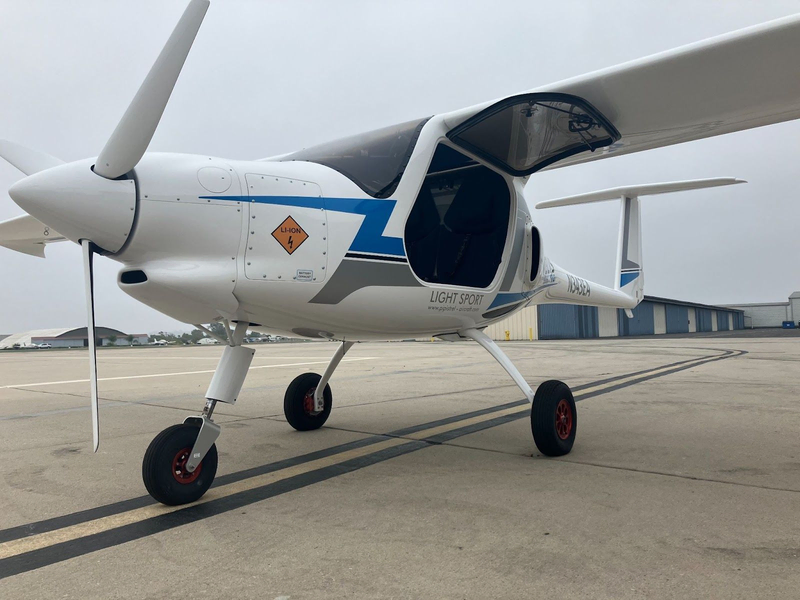
AMSL Aero is one of the few green aviation companies in Australia that have taken on the challenging task of pioneering eVTOL development and manufacturing. It was founded seven years ago by husband and wife Andrew Moore and Siobhan Lyndon. Moore, who invented the Vertiia aircraft concept, has decades of experience in the aircraft industry, supported by Lyndon’s equally impressive experience in technology and telecommunications.
In just a few years, the two have successfully grown their company and tested the first Vertiia prototype. Starting this year, they’ll get a helping hand from the company’s newly-appointed CEO, Max York. York is both a military veteran (he was a Royal Australian Navy Commander) and former CEO of GE Australia, where he led commercial activities in the Asia Pacific region.
With Mark York onboard, AMSL Aero is now ready to step into its next phase and get closer to commercial operations for its flagship aircraft.
The Vertiia eVTOL was designed with the particularities of the Australian environment and operational needs in particular, but with a global vocation as well. At the time of its unveiling, it claimed to be the first eVTOL in the world to be powered by hydrogen and also boasted “the most efficient long range.”
Indeed, the numbers look promising. On paper, at least, Vertiia promises a 1,000 km (621 miles) range, coupled with a 300 kph (186 mph) speed and a maximum payload of up to 500 kg (1,100 lb). In other words, Vertiia is faster than similar eVTOLs and able to reach further, and it’s mostly thanks to the use of sustainable hydrogen power.
In terms of efficiency, the Aussie aircraft is said to use less energy per seat than a high-speed train. It also operates quietly (65-70 decibels) and takes only 10 minutes to refuel without depending on airport infrastructure.
By combining battery technology with green hydrogen power, it’s supposed to be more sustainable compared to other eVTOLs while promising better performance. Plus, this efficiency would also be reflected in financial terms, with the Vertiia eVTOL claiming to lower operational costs by a drastic 70% compared to conventional helicopters.
Last but not least, this pioneer Aussie aircraft was also designed with versatility in mind. In addition to the standard passenger and cargo configurations, Vertiia will be equipped for air ambulance and emergency response operations.
So far, the initial tests of the first prototype have confirmed the promises of this bold concept, and AMSL Aero seems to be on the right path toward certification.
In just a few years, the two have successfully grown their company and tested the first Vertiia prototype. Starting this year, they’ll get a helping hand from the company’s newly-appointed CEO, Max York. York is both a military veteran (he was a Royal Australian Navy Commander) and former CEO of GE Australia, where he led commercial activities in the Asia Pacific region.
With Mark York onboard, AMSL Aero is now ready to step into its next phase and get closer to commercial operations for its flagship aircraft.
The Vertiia eVTOL was designed with the particularities of the Australian environment and operational needs in particular, but with a global vocation as well. At the time of its unveiling, it claimed to be the first eVTOL in the world to be powered by hydrogen and also boasted “the most efficient long range.”
Indeed, the numbers look promising. On paper, at least, Vertiia promises a 1,000 km (621 miles) range, coupled with a 300 kph (186 mph) speed and a maximum payload of up to 500 kg (1,100 lb). In other words, Vertiia is faster than similar eVTOLs and able to reach further, and it’s mostly thanks to the use of sustainable hydrogen power.
In terms of efficiency, the Aussie aircraft is said to use less energy per seat than a high-speed train. It also operates quietly (65-70 decibels) and takes only 10 minutes to refuel without depending on airport infrastructure.
By combining battery technology with green hydrogen power, it’s supposed to be more sustainable compared to other eVTOLs while promising better performance. Plus, this efficiency would also be reflected in financial terms, with the Vertiia eVTOL claiming to lower operational costs by a drastic 70% compared to conventional helicopters.
Last but not least, this pioneer Aussie aircraft was also designed with versatility in mind. In addition to the standard passenger and cargo configurations, Vertiia will be equipped for air ambulance and emergency response operations.
So far, the initial tests of the first prototype have confirmed the promises of this bold concept, and AMSL Aero seems to be on the right path toward certification.












